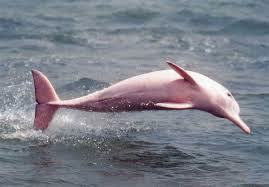It’s now September 5th and it’s less than 30 days until the start of the Bodacious Dream Expedition around the globe! Work continues on Bodacious Dream each day, as we continue to make modifications to improve my ability to sail the boat by myself, and also to make it easier to communicate with you the many wonders we’ll be encountering.
I mentioned briefly in the last update about my trip with Earthwatch Researcher Tegan Mortimer onboard the vessel, Whale Watch. It was great spending time and learning from someone so passionate about her work. As I mentioned, Tegan specializes in plankton and whales – cool huh? – from the tiny to the titanic!
So, here are some interesting facts about whales that I learned:
- Did you know that all dolphins are whales, but not all whales are dolphins? Yes, there are differences.
- Different whale species are often most easily identified by the shape (or the absence) of a dorsal fin?
- Many Humpback Whales are identified by the coloring and markings on their tails?
- Many of these Humpbacks have individual names given to them by researchers, and so are tracked throughout their lives?
- Many whale populations are rebounding, but are still greatly reduced from historical records.
- My own quick math says that whale populations are approximately about 10% of what they were in the 1800s? If you think about that … sometimes the whale watch boats see 10 or more whales at once. Can you imagine what it was like back in 1800s, when that number might have been 100! That’s a lot of big bodies in the water!
- There are only about 350-500 of the protected Northern Right Whales still in the Atlantic Ocean, and they all pass through the shipping channels outside of Boston.
- Each whale species has their own specific dive sequence. Some of these whales show their tail when they dive and some don’t.
 There is a fresh water adapted dolphin, called the Boto, in the Amazon River that is pink in color? These Boto Dolphins are thought to be very magical. They are believed to be the spirits of ancestors because one very different thing about them; that is their necks turn like a person? No other dolphin has that capability. Had to do a search to see what they looked like.
There is a fresh water adapted dolphin, called the Boto, in the Amazon River that is pink in color? These Boto Dolphins are thought to be very magical. They are believed to be the spirits of ancestors because one very different thing about them; that is their necks turn like a person? No other dolphin has that capability. Had to do a search to see what they looked like.
Well, I learned so much more from Tegan about whales too. She showed me how to spot whales and how to compare their dive sequence with the reference manual to help make sure that I’ve identified them correctly. I found this to be very helpful because whale sightings happen so quickly sometimes, that it’s not easy to get a picture that can identify the species conclusively.
Learning about Whale’s Dive Sequence
For the circumnavigation, I got a new camera that automatically geo-tags the photographs and videos I take. This will be helpful in collecting all the data necessary to allow Earthwatch whale researchers to use the information. The photos contain info on the latitude and longitude of the picture, as well as the time of day and the direction I am looking when I shot the photograph. The videos will help us to identify the whale from the dive sequences. This is going to be one of the most exciting parts of the trip as I pass through a broad variety of different whale populations and territories.
Another cool thing Tegan explained was how sensors were being used to warn ships of the small remaining world population of Right Whales who all pass through the shipping lanes near Boston.
Looking out for Right Whales
Our trip aboard Whale Watching provided us many other things to see too. We spotted some debris in the water, mostly floating wood and plastics in the harbor. We also saw a very fun and amazing thing – a feeding school of Blue Fin Tuna! These majestic fish have a very distinctive shape to them. The ones we saw were probably 60 to 100 pounds in size, jumping clearly out of the water. The tuna are a warm-blooded fish and can swim as fast as 40 miles an hour!
So … many thanks to Tegan and to Earthwatch for providing me the time to learn how to research, catalog and identify the whales I’ll see along the trip.
For now, it’s back to boat projects as we get ready to launch next Monday after finishing the mast work, the satellite work and reinstalling the mast. Soon we’ll be sailing once again, and it will be time to work on loading the boat with all the necessary equipment and food for the trip.
More soon,
– Dave & Bodacious Dream

